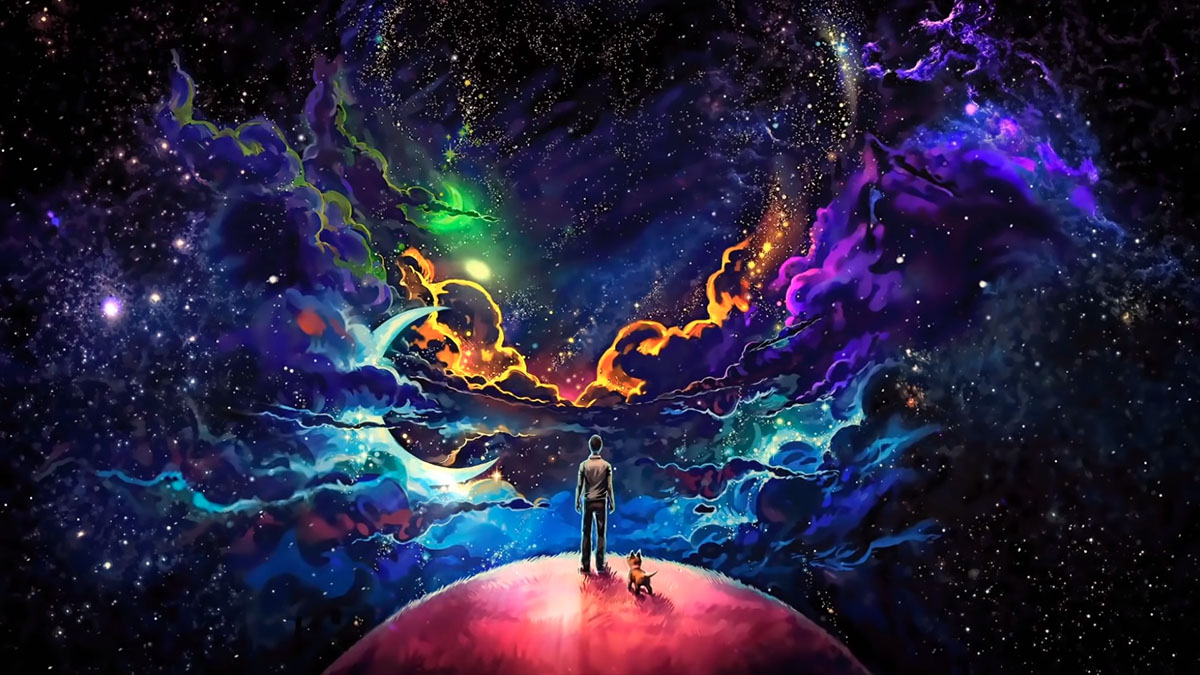black hole suns: the theoretical monsters at the dawn of the universe

Soundgarden’s melancholic stream of consciousness Back Hole Sun was written after the band’s frontman Chris Cornell thought he heard the words from a new anchor, decided it had to be a title of a song, and worked backwards from there. But if you were to ask cosmologist studying the early universe, they might just tell you that black hole suns were quite possibly real stars as big as our solar system, powered by ravenous black holes at their hearts, and that they might be the key to understanding the formation of today’s galaxies.
It’s long been accepted that the very first stars in the universe, the Population III objects, must have been enormous. Pure hydrogen and helium trapped in a much denser universe with dark matter halos pushing vast clouds of them together meant that supermassive stars were routine at the dawn of time. But very weird things happen when you start pushing hundreds of millions of solar masses into tight gravity wells and then can’t release the pressure when they collapse and start to undergo fusion.
Normal star birth triggers a massive shockwave that pushes away the nebula from which that star originated, limiting its growth. It generally reaches equilibrium soon after that, and even if it snacks a bit on the protoplanetary cloud it generates, it won’t grow to insane, unstable sizes. However, in the early universe, that gas was crammed together so tightly that all the birth of a giant star did was churn it a bit as it continued falling in. Not only did the star keep growing, it couldn’t stop until something very bizarre and horrible happened to its core.
first stars’ reality-shattering growing pains
In a supernova, black holes are born when the remaining mass of a star collapses in on itself at relativistic speeds due to its mutual gravitational pull. In the first stars, the innards’ mass would slowly grow until the very fabric of space and time couldn’t cope with the strain and imploded, like putting more and more weight on a sagging trampoline until its fabric gives way. And that left the star with a ravenous black hole at its center, a black hole force fed stellar material the star’s gravity had to keep funneling into its event horizon by the laws of physics.
For millions of years, the black hole would eat the hydrogen and helium constantly crammed down its gullet with a gravitational press until its mass and spin began disrupting the huge star in which it was trapped. Gamma ray jets would pierce the star’s poles. Its density would finally drop, forcing its surface to expand to over a quarter of a trillion kilometers across as its innards kept spiraling into the monster now controlling it. It would be the beginning of the end and only a few hundred thousand years later, the star would finally disintegrate in a brilliant flash.
With that, the black hole now tipping the scales at half a million or more times the mass of our sun, could finally take a breather from its multi-million-year binge. Meanwhile, its gravity well would attract much smaller stars and clouds of gas, forcing them into spiraling orbits, creating the first quasars, then the first galaxies. Or at least that’s a trending hypothesis to explain why supermassive black holes formed billions of years before they should have, and the dynamics of stars that would dwarf anything even remotely possible after them.
what are the chances this really happened?
Now, you may be asking whether all this is really possible, and the answer is mathematically, yes, it all works out, but ultimately, we don’t know because math isn’t destiny, just possibility. However, we finally have the tools to investigate this idea far more thoroughly at our disposal. Given its powerful lenses, incredibly cold operating temperatures, and distance from Earth, the JWST should have just enough power to glimpse the very first stars and tell us how big, bright, and stable they are, giving us real numbers to plug into our simulations.
Should the math hold, we would not just have images and explanations for how the first light shone in the universe and know the origins of supermassive black holes at the hearts of what would become the first galaxies, we would also confirm if physics worked the same way in the early universe as the do today, something still very much open to debate. And if what we see won’t fit into our current projections, the data could be even more exciting, triggering brand new theories to explain how the laws of reality came to be what they are over the eons.
It seems unbelievable how just a few points of light from the right corner of the sky could tell us so much if we know for what to look, but that’s one of the most interesting and amazing parts of our universe. It’s a manifestation of relatively simple rules and recursive actions happening for billions of years under no obligation to make sense to us, and the best we can do is keep on peeling away the layers until we get to the underlying truths that will let us successfully predict what will happen in the next experiment and explain why it happened that way.





